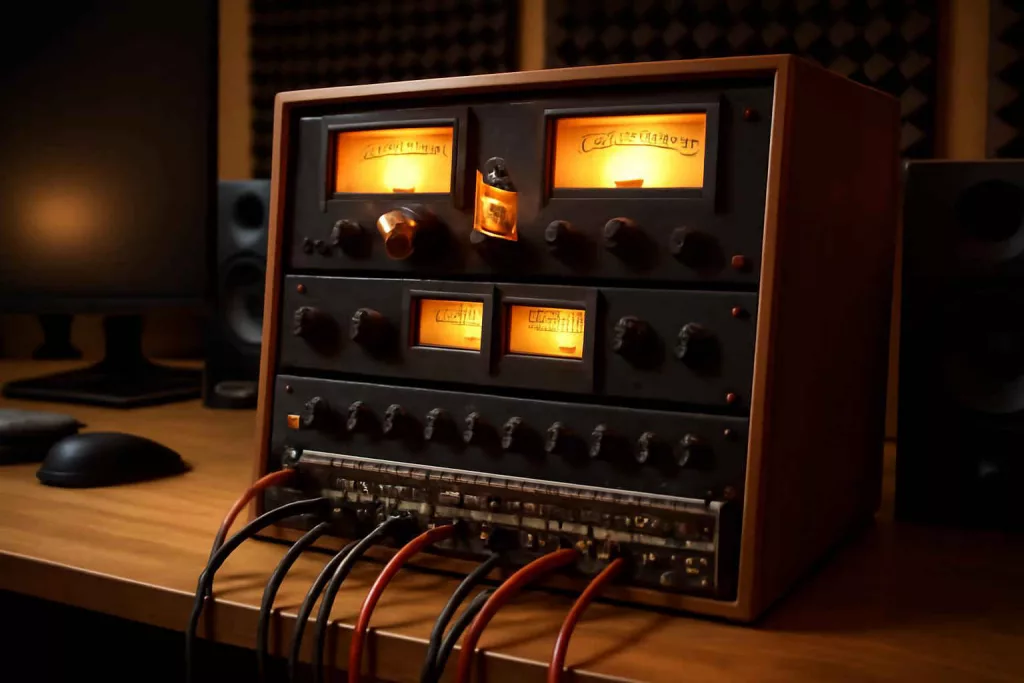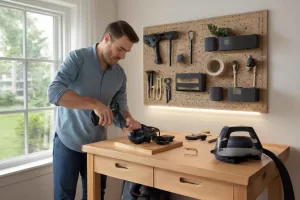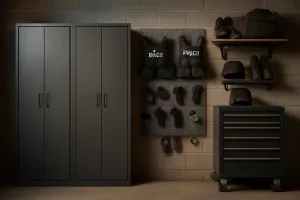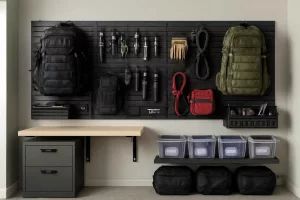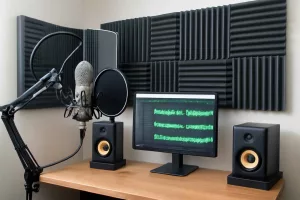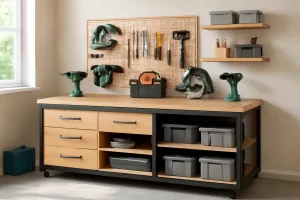Building a home studio that captures the warmth and character of classic recordings hinges on choosing the right analog gear. From tube preamps and compressors to patch bays and tape emulators, this guide dives into the essential analog equipment to take your tracks from digital lifelessness to rich sonic masterpieces. We’ll cover top picks, integration tips, and maintenance best practices so you can focus on creativity instead of technical headaches. Explore tube preamps to get started.
Why Choose Analog Gear for Your Home Studio
Warmth and Character
Analog circuits—especially those based on tubes and transformers—add subtle harmonic distortion and saturation that digital plugins struggle to replicate. This warmth brings vocals and instruments to life, giving mixes a three-dimensional quality and musical texture.
Hands-On Control
Physical knobs, switches, and meters offer an intuitive workflow. Turning a vintage compressor’s threshold or tweaking an EQ’s frequency band is more tactile than clicking a mouse, making fine adjustments feel more natural.
Longevity and Value
Well-built analog units can last decades with routine maintenance. Unlike software licenses tied to evolving operating systems, quality hardware retains resale value and often becomes collectible as models are discontinued.
Essential Analog Gear for Home Studios
Tube Preamps: Top Picks
Tubed preamps are often the first analog upgrade for home studios. They infuse recordings with smooth, musical saturation. Consider units like the ART Tube MP Studio V3, Universal Audio Solo/610, or Behringer MIC2200. Each offers unique characteristics:
- ART Tube MP Studio V3: Affordable entry point with switchable impedance (shop).
- Universal Audio Solo/610: Vintage experience in a desktop footprint.
- Behringer MIC2200: Dual-channel with compressor and tube-driven warmth.
Compressors: Top Analog Compressor Units
Analog compressors add punch and glue. The DBX 160A, Warm Audio WA-2A, and FMR RNC1773 are favorites for home use. When choosing a compressor:
- DBX 160A: Classic VCA compression with strong attack.
- Warm Audio WA-2A: Smooth optical compression ideal for vocals.
- FMR RNC1773: Transparent, budget-friendly design.
These units can transform dynamic tracks into polished elements that sit nicely in your mix.
Equalizers: Classic EQs
Analog EQs shape tone more musically than many digital counterparts. The API 550A, Pultec EQP-1A clones, and Drawmer 1960 are recommended:
- API 550A: Surgical, punchy EQ for drums and bass.
- Pultec EQP-1A Clone: Iconic boost-and-cut curves for warmth.
- Drawmer 1960: Versatile channel strip with EQ and compressor.
Analog Tape Emulators and Saturation
Tape machines add subtle compression, harmonic content, and transient smoothing. If a full tape machine is out of budget or space, look at units like the TASCAM 414 Portastudio or the Fostex Model 80. For digital integration, consider tape emulator hardware such as the ATR-102 style units or saturation boxes like the Slate Digital VTM, which emulate tape on the analog front end.
Patch Bays and Signal Routing
Efficient patching keeps your workflow seamless. A DB25 patch bay or a modular patch bay like the Behringer Ultrapatch Pro allows quick rerouting between preamps, compressors, EQs, and interfaces. Label your patch points and keep cables organized for faster setup changes.
Studio Monitors and Interface Integration
While not strictly analog, choosing an interface with high-quality analog I/O ensures your gear communicates cleanly with your DAW. Look for interfaces with discrete preamps and robust converters. Pair them with nearfield monitors from brands like KRK or Yamaha for accurate translation of your analog enhancements.
How to Integrate Analog Gear into a Home Setup
Setting Up Gain Staging
Proper gain staging prevents unwanted noise and ensures maximum headroom. Start with clean, unity gain on your audio interface, insert your analog preamp or compressor, and adjust levels to avoid clipping. Keep meters in the green.
Connecting to DAW and Digital Integration
Use balanced TRS or XLR cables to connect analog out of your preamp/compressor into the interface. Insert hardware on individual channels via DAW software routing or an analog summing mixer for a hybrid approach.
Soundproofing and Acoustic Treatment
Analog gear shines when your room acoustics are controlled. Consider how to soundproof your home studio with foam panels, bass traps, and diffusers. This prevents unwanted reflections from coloring your recordings.
Buying Guide: What to Look For
Budget Considerations
Set a realistic budget. Entry-level tube preamps start around $200, while premium units exceed $1,000. Decide if you prefer new gear with warranty or used units that saved you hundreds.
Pre-Owned vs New Gear
Used analog units can deliver authentic vintage tone at a fraction of the cost. Buy from reputable sellers or local shops to test functionality and avoid noisy components.
Size and Space Requirements
Rackmount gear optimizes studio racks, while desktop units save rack space. Factor in depth, ventilation, and cable management when planning your rack or desktop layout. For ideas on efficient setup, check our optimal studio workspace layout.
Maintenance Tips for Analog Gear
Cleaning and Calibration
Regularly dust and clean knobs with contact cleaner. Schedule professional calibration annually to maintain accurate levels and prevent component drift.
Troubleshooting Common Issues
Hum, noise, or intermittent signal can result from loose ground connections or aging tubes. Swap tubes one at a time to identify faulty ones, and inspect cables and patch points.
Frequently Asked Questions
Does analog gear really improve audio quality?
Yes—analog units introduce musical harmonics and nonlinearities that can enhance depth and warmth, characteristics often sought after in professional mixes.
Can I use analog gear with any DAW?
Absolutely. Analog gear interfaces via standard analog connections. Your DAW routes audio to and from your interface, allowing you to record and monitor hardware-processed signals.
What’s the best budget-friendly analog gear?
Starter units like the ART Tube MP Studio V3 or the FMR RNC1773 compressor deliver significant tone enhancements under $200 each, making them ideal for entry-level studios.
Conclusion
Investing in the best analog gear for your home studio unlocks rich, organic sound that stands out in today’s digital landscape. From tube preamps and compressors to EQs and patch bays, each component adds character and control. Plan your space carefully, integrate hardware with your DAW, and maintain your units for years of reliable, inspiring performance. Elevate your recordings with authentic analog warmth today by exploring recommended gear and setup tips above. Don’t forget to secure essential analog equipment to complete your home studio arsenal.
